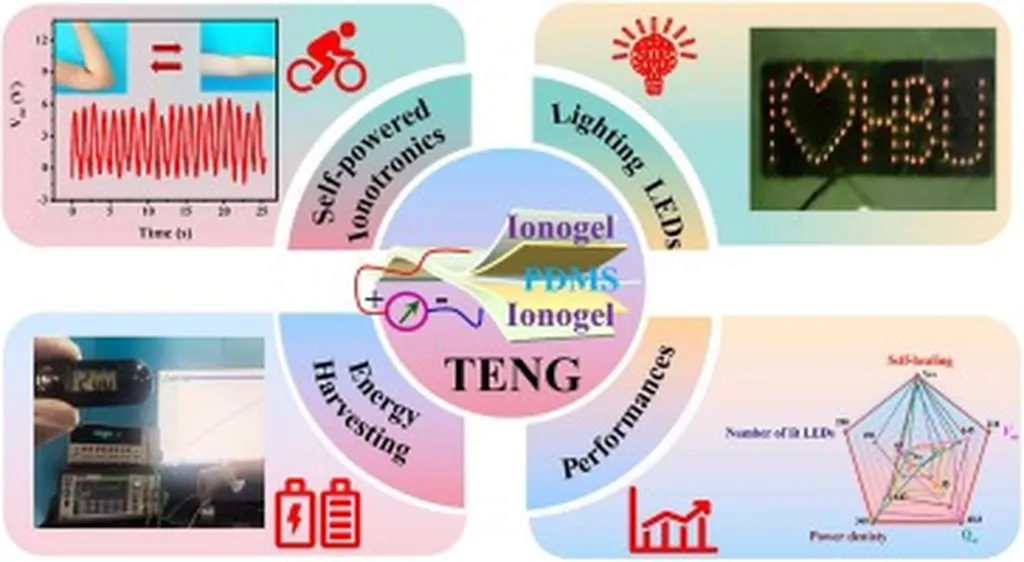In the rapidly evolving landscape of wearable technology, a groundbreaking review published in the journal Sustainable Materials (SusMat), translated from its original name, has shed light on the transformative potential of ionogels in health monitoring. Led by Wenzhe Xiao from the Key Laboratory of Molecular Medicine and Biotherapy at the Beijing Institute of Technology, this research delves into the synthesis, performance, and applications of ionogels, offering a fresh perspective on their role in wearable sensors.
Ionogels, a class of materials combining the flexibility of polymers with the conductivity of ionic liquids, have been gaining traction in various fields, including soft electronics and biomedicine. However, their application in health monitoring has faced challenges, primarily due to the need for reliable and consistent performance. Xiao and his team have meticulously examined the design principles governing polymer network optimization and advanced manufacturing techniques for ionogels, providing a comprehensive overview of the current state of the art.
“Our review offers a novel perspective on the development of wearable sensors for health monitoring by comprehensively examining ionogel synthesis methodologies, highlighting critical performance parameters, and exploring underexplored applications,” Xiao explained. This thorough analysis not only elucidates the strategies for enhancing critical performance but also explores specific application scenarios, including noninvasive biochemical analysis, real-time motion monitoring, and disease-specific assessments.
The implications of this research extend beyond the realm of health monitoring. In the energy sector, the development of reliable, flexible, and thermally stable sensors could revolutionize the way we monitor and manage energy systems. For instance, wearable sensors could enable real-time monitoring of energy consumption and production in smart grids, leading to more efficient and sustainable energy management.
Moreover, the establishment of a hierarchical health monitoring framework that integrates molecular-, individual-, and systemic-level perspectives offers a unique and in-depth understanding of this emerging field. This framework could pave the way for the development of advanced health monitoring systems that are not only reliable but also capable of providing comprehensive and actionable insights.
As the field of ionogels continues to evolve, the challenges and opportunities highlighted in this review will undoubtedly shape future developments. The integration of ionogels into wearable sensors for health monitoring is just the beginning. The potential applications of these materials in the energy sector and beyond are vast and hold the promise of a more sustainable and efficient future.
In the words of Xiao, “The future of ionogels is bright, and their potential applications are vast. We are excited to see how this field will continue to evolve and impact various industries, including energy and healthcare.”

